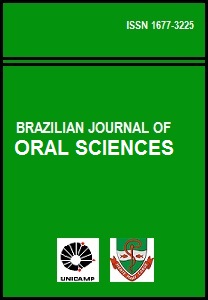Abstract
Aim: To evaluate the effect to the degree of temporomandibular dysfunctions (TMD) in adolescents and occlusal classes in the cervical posture. Methods: A cross-section, observational study was carried out, in which 296 adolescents took part. For the evaluation, the patients were divided into groups according to the presence and severity of the TMD, using the Helkimo questionnaire and occlusal Angle classification. The posture analysis was carried out using photogrammetry and the software Alcimage® to measure the predefined angle based on the protuberances of the Spinous Process of the 7th cervical vertebra (C7), manubrium of the sternum and mentum vertex. Results: 48% (n= 142) of the 296 adolescents evaluated presented no dysfunction, while 52% (n= 154) presented some degree of TMD. Of the different degrees of TMD, the highest average cervical angulation observed in the group with moderate dysfunction was 97.59º ±7.40, followed by a mild degree, of 96.32º± 9.36, and the lowest average was 93.01º±10.08 in the patients with a severe degree in the different occlusal classes. In relation to occlusal class, higher values for this angulation were observed in class II (96.77º± 8.79), compared with class I (90.64º±8.80) and class III (94.67º± 10.70), a difference which was statistically significant. Conclusions: The subjects with TMD presented a greater alteration in head posture, compared with those without TMD. In particular, the Class II Angle was correlated with TMD and alterations in cervical posture.The Brazilian Journal of Oral Sciences uses the Creative Commons license (CC), thus preserving the integrity of the articles in an open access environment.
Downloads
Download data is not yet available.

